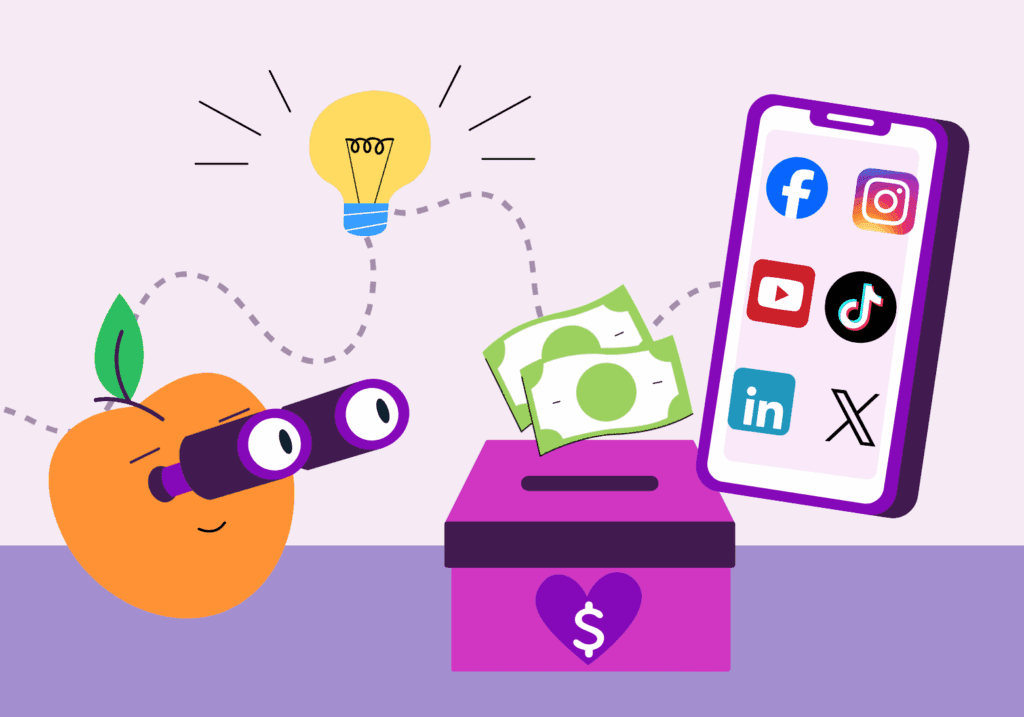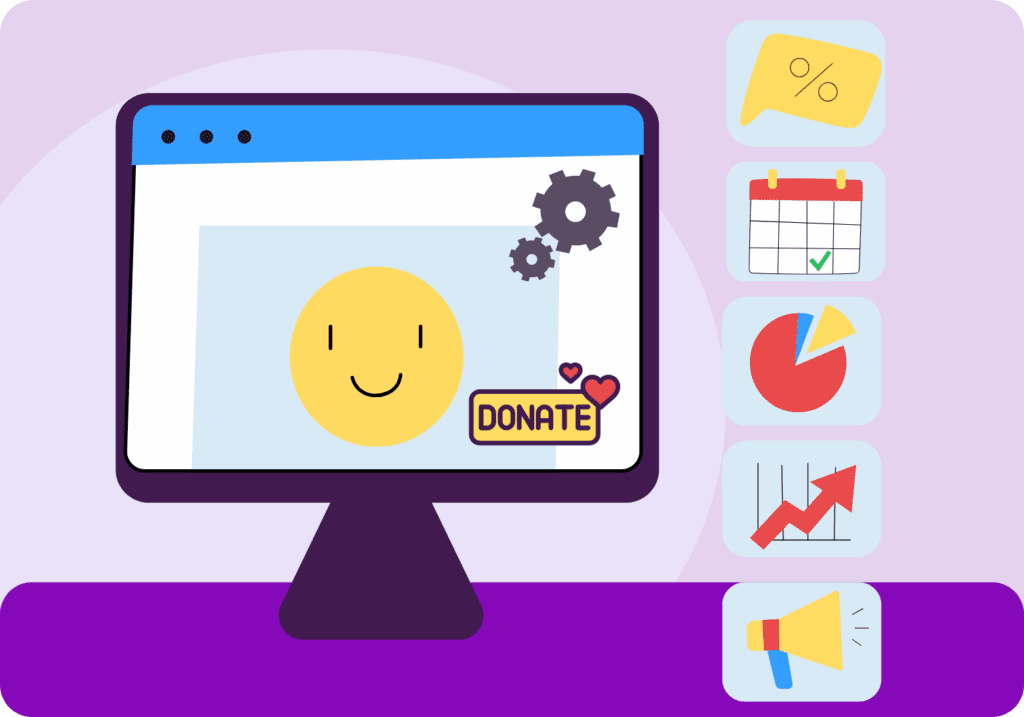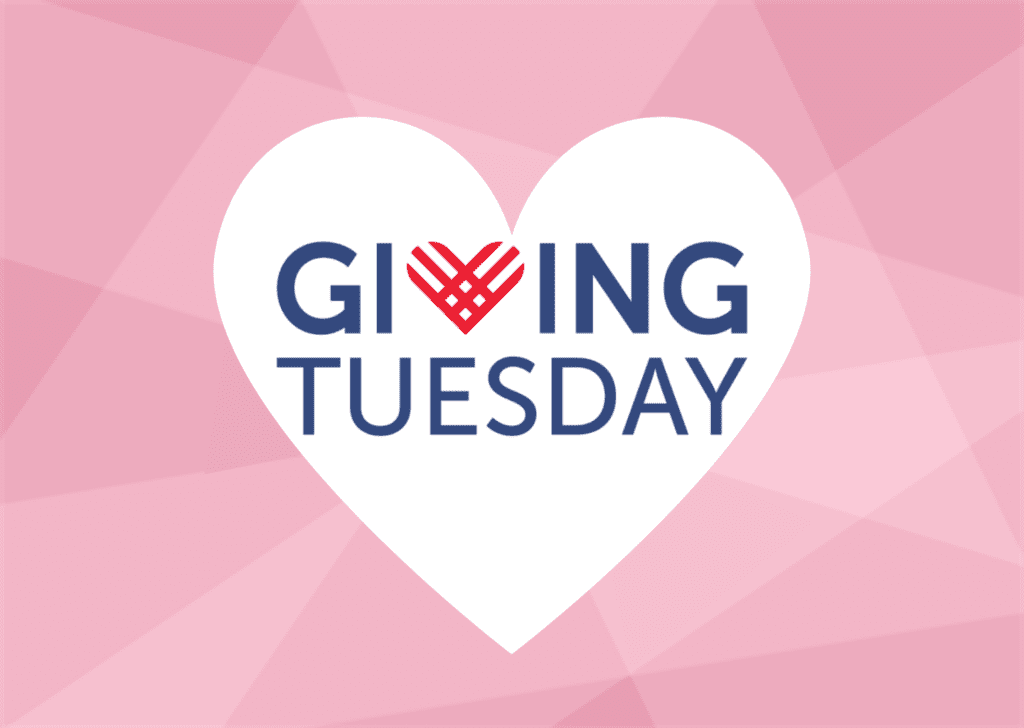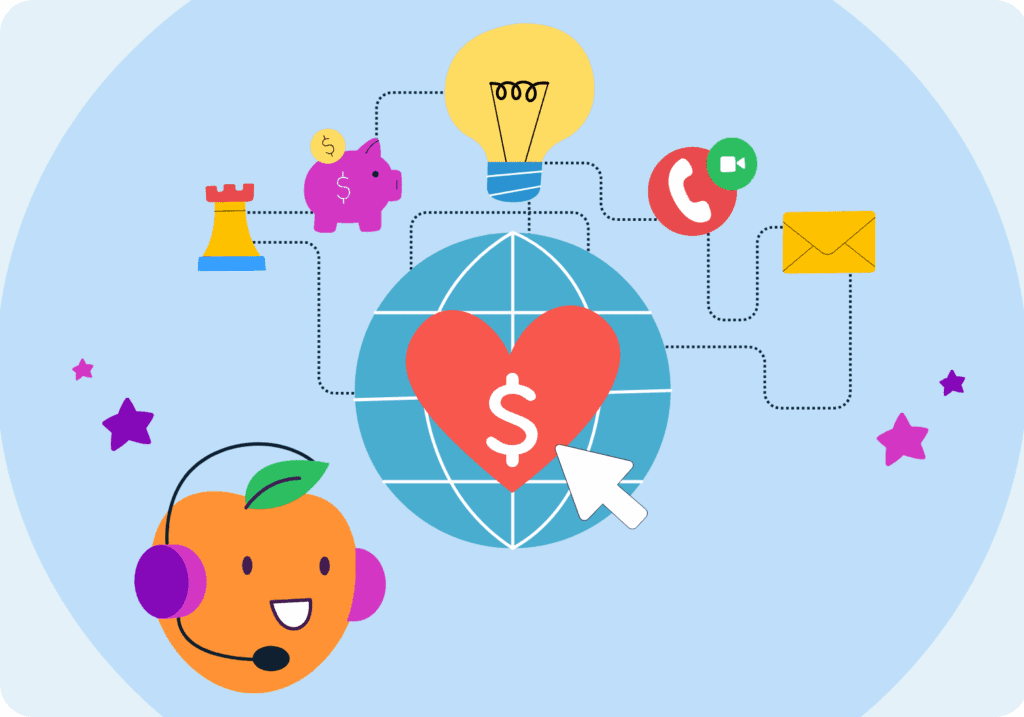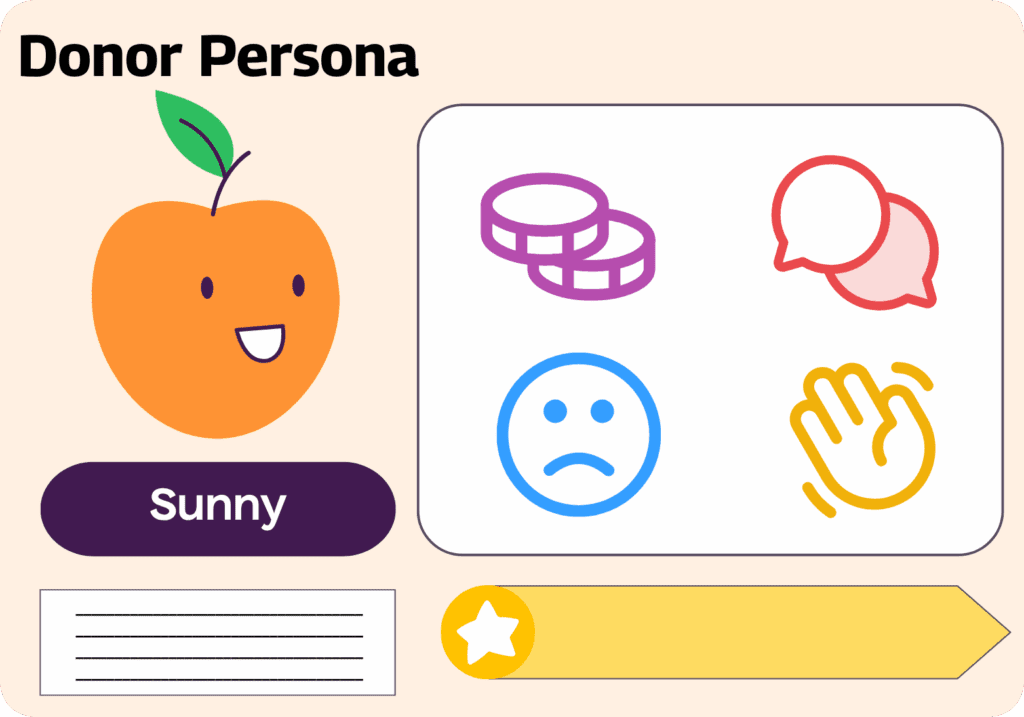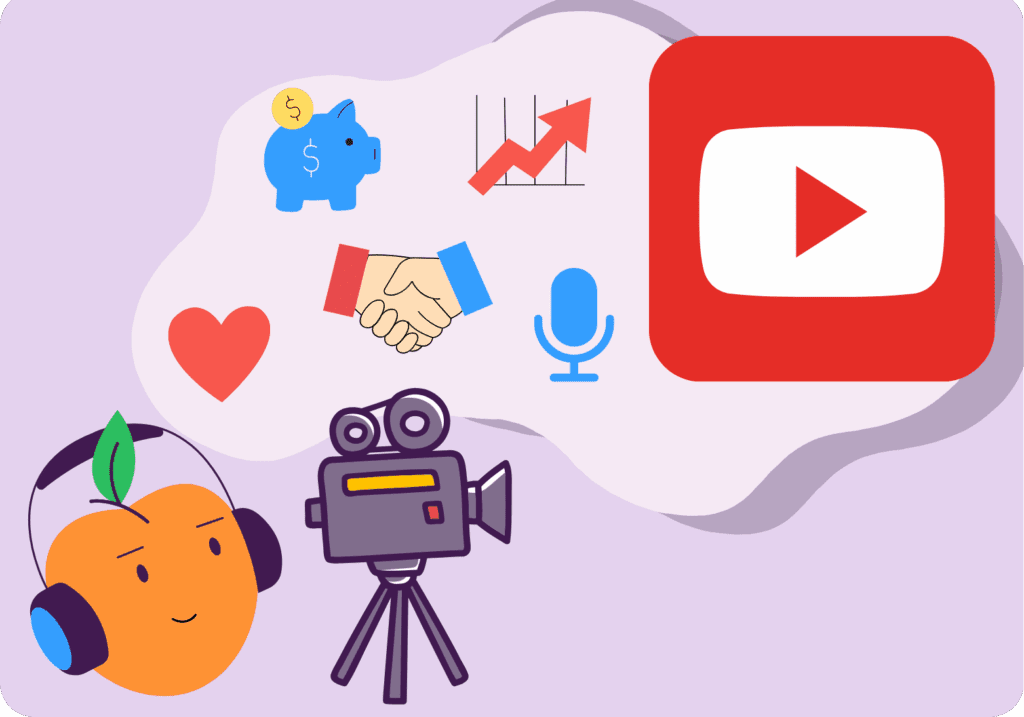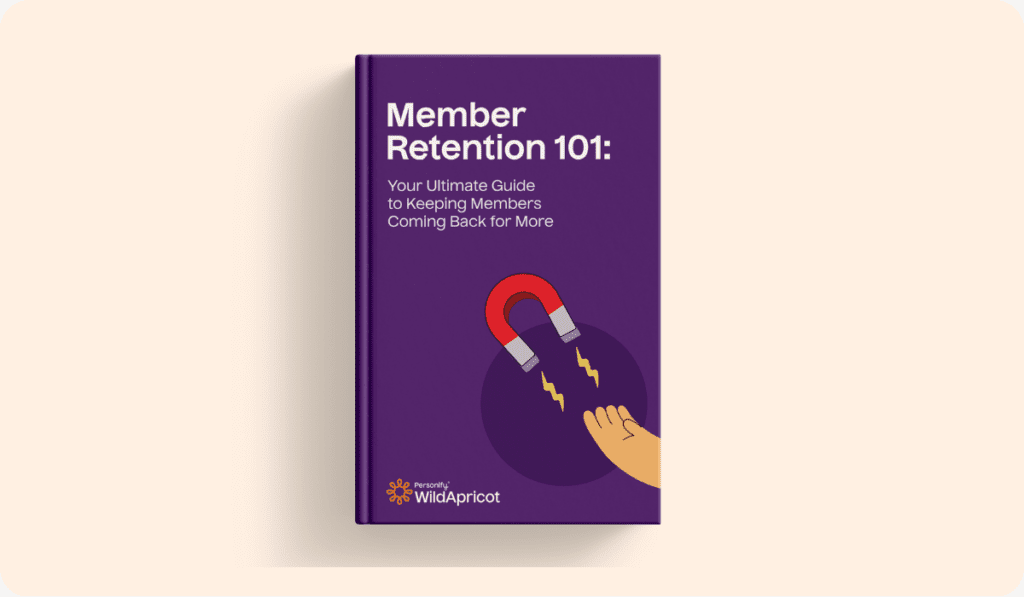Did you know that 63.9% of the global population uses social media? Whether it’s Facebook, YouTube, Instagram, LinkedIn or another social media platform, this is a marketing channel nonprofits would be remiss to forget when it comes to fundraising.
Social media fundraising for nonprofits presents a huge opportunity to boost awareness, reach a wider audience and ultimately make a bigger impact on your mission. However, it’s hard to know which platform to use, what kind of content to share and how to maximize your campaigns to gain the most engagement.
Combine those questions with the ever-mysterious algorithms that change daily, and you can become lost in the noise, even for the most experienced marketing professionals.
Don’t let this keep you from leveraging social media in your nonprofit organization’s fundraising efforts. We’re here to help you get started. In this blog, we’ll show you:
- How to choose the right social platform for your nonprofit
- Real-world examples of online fundraising
- 20 social media fundraising ideas
- Best practices for seeing success
What is Social Media Fundraising?
You may think social media fundraising is the same as online fundraising. While social media is online (and giving online is the main way donors prefer to contribute), social media helps you reach more than just the visitors to your website. The world of digital communities can connect your mission to people across the globe – if your posts can grab their attention.
Social media fundraising, essentially, is when an organization utilizes online social platforms to raise money for its cause. This could be Facebook, LinkedIn or even TikTok. By sharing your fundraising goals, impactful stories and links to support, viewers of your content can easily contribute to your organization.
But why is social media so vital for online fundraising?
The actions taken on social platforms can be more impactful than just a monetary donation. Often, a supporter may not have the funds for a donation (although they want to help), and this is where the social aspect of social media comes into play. Sharing, liking, commenting and reposting your organization’s content gets you in front of a wider audience, reaching more people who resonate with your cause.
As we know, a larger audience = more awareness = increased donations.
How to Choose the Right Social Media Platform
Just as not every person has the same style or aesthetic, not every social media platform will be the best fit for your organization.
Here’s a quick glimpse at the most popular social media networks available:
- Facebook: A widely-used platform across generations, Facebook is a great host for event updates, images, longer-form text and easily shareable fundraising campaigns.
- X (previously Twitter): This platform is limited to 280 characters per tweet, so it’s best used for quick and timely updates or to keep an eye on what the media is up to in your area.
- Instagram: The land of the “influencer,” Instagram is perfect for impactful images, storytelling captions and live-streamed video updates.
- LinkedIn: A professional platform, LinkedIn is a helpful solution for discovering top talent for your nonprofit and connecting with high-impact corporate givers.
- YouTube: The classic video platform where long and short-form stories are told. This is a great platform to use for evergreen pieces of content and deep dives on your organization’s cause. They have a YouTube for Nonprofits program for eligible orgs.
- TikTok: A newer, video-based platform that’s widely used by teens, in which users record short video clips, consumed quicker and more easily than YouTube. Their TikTok for Good page lists various challenges that users have contributed to and nonprofits have received donations from.
Take your donor demographics into consideration when choosing your social media networks as well. You’ll want to choose a channel that the highest majority of your donors are using (or the donors you wish to reach). For example, consider Instagram or experiment with TikTok for a younger audience, and use Facebook for a more generation-spanning audience.
20 Social Media Fundraising Ideas for Your Nonprofit
Now, the part you’ve been waiting for: here are some ideas to get donations rolling in from your social networks.
1. “Why I Give” Donor Spotlight
Ask your previous donors to record a short video or write a brief testimony sharing why they give to your organization. Everybody’s “why” is different; seeing someone’s “why” can be a great motivator for others to support. This can either be posted directly on your nonprofit’s social account or on the donors’ accounts, then reposted on your official page.
2. Birthday Dedications
Instead of asking for gifts on your birthday, invite others to contribute to your nonprofit! Supporters will be able to easily share this on platforms like Facebook and Instagram.
3. Virtual Auction
Using your social platform of choice, host an auction of donated items. This can be done live to spark excitement from supporters or on your regular newsfeed, allowing the bids to rise higher each day of the event.
4. Donation Stickers
Donation stickers are an easy-to-use tool in Instagram stories, TikTok livestreams and videos. When someone clicks on your sticker, they are directed to the donation page of your nonprofit organization, making it a simple, one-click donation.
5. Influencer Partnership
Influencer marketing is extremely popular in today’s advertising. Partner with someone who has a large following; they can spread the word about your fundraiser and the impact your organization makes.
6. “Sponsor a ____”
Focus on a specific need your organization has and make that the donation request of your followers. For example, “$40 covers the adoption cost of a cat at our shelter.” This provides supporters with a tangible example of the impact of their donation.
7. Daily Post Challenge
Encourage supporters to post daily on their social media networks for your cause. This could be a week-long challenge where you post a daily act of kindness inspired by your nonprofit’s mission. This raises awareness and helps you reach a wider audience. The more people who participate, the more it helps.
8. “Day in the Life”
Let one of your donors, volunteers or staff members take over the social account for the day and share what life is like for your nonprofit. It allows your followers to get behind-the-scenes and see an advocate of your org’s perspective.
9. Donor Appreciation
Showing gratitude is one of the most effective ways to enhance donor retention. Make this day of social media posts all about the donors and appreciating their contributions. Highlight the impact made, and it just might encourage others to follow suit.
10. “Mission in Action”
Similar to “a day in the life,” take your followers along and show them how their donations make a difference. For example, if your focus is on children’s education, you could share videos and photos of bringing books to a local classroom, allowing donors to be connected beyond their gift.
11. Virtual Talent Show
Livestream fundraising is always a hit and promotes engagement from your viewers. Ask your supporters to participate in a talent show streamed live on your social channel. Viewers can donate while they watch and vote for their favorite act.
12. Hashtag Challenge
Create a simple, photo-friendly action tied to your nonprofit (such as walking a mile, posting a pet adoption photo, or sharing a “volunteer moment”) and encourage participants to donate and tag friends using a branded hashtag. This could look like #WalkForWater #AdoptedAtAsheboro #CharlotteGiveBackChallenge.
13. “Then and Now” Impact Showcase
Share before-and-after photos that highlight how donations made a difference. This is especially impactful in a photo carousel where followers can easily swipe through and see the success.
14. Trending Audio and Photos
Particularly popular on TikTok, trending audio and corresponding dances gain a lot of traction. Utilize this for your organization and showcase your mission in a fun way to grab the attention of younger audiences.
15. Vote for the Cause
Use Instagram or Facebook polls to let your followers vote between two initiatives (“What should we fund next — playground or garden?”). At the end of this campaign, share which project won and how much was raised.
16. “Pass the Purpose”
Remember those chain emails where you had to forward the message to 5 other people for good luck? Pass the purpose works similarly, but it encourages followers to make a short video and share one reason they support your cause, then tag another person to do the same.
17. Instagram Story Templates
Make sharing your fundraiser easy for your donors with pre-made templates. Create ready-made Instagram Story templates with “I donated because…” or “Join me in supporting…”. Donors can repost this with their pictures, easily promoting your organization and adding some cohesion to the content.
18. Matching Gift Countdown
To build a sense of urgency and encourage action from donors, set a time limit for your fundraiser. When you pair this with a corporate partner or a major donor match, the results are even more impressive. For example, “Every dollar donated in the next 72 hours will be doubled!”
19. Milestone Donation
Celebrate a milestone (such as your anniversary or serving your 1,000th member) with a special campaign — “Help us reach $10,000 for 10 years of service.”
20. “Give it Up for Good”
Challenge your followers to give up one small daily expense (such as coffee, a streaming subscription or dinner out) for a short period and donate that money instead. Small expenses can really add up and help make a difference.
Read more: How to Promote a Fundraiser: Tips to Boost Awareness and Donations
4 Standout Social Media Fundraising Examples
#GivingTuesday (Ongoing Annual Campaign)
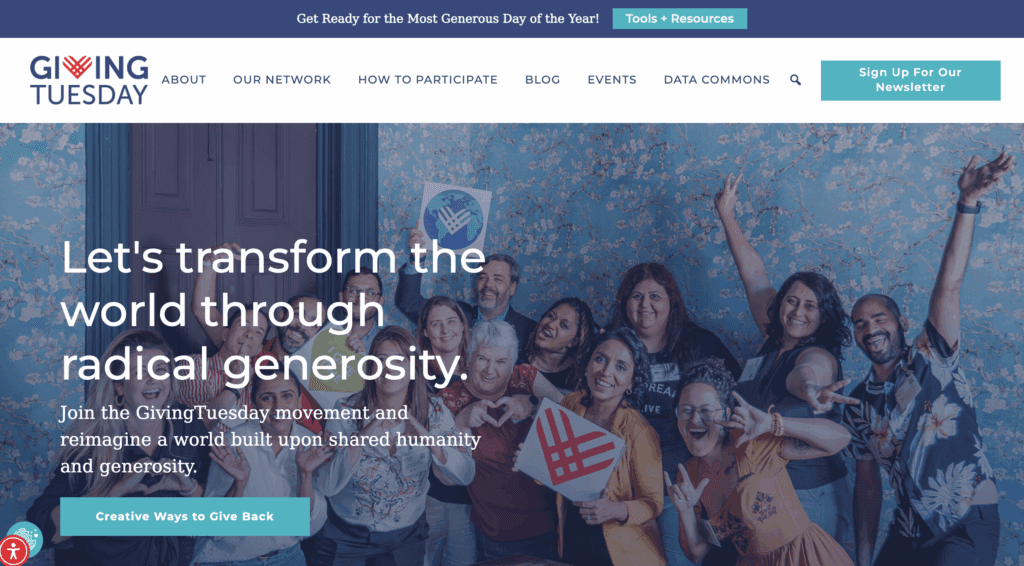
Platform: All! Facebook, Instagram, TikTok, LinkedIn, X, you name it!
Everyone is inspired by GivingTuesday. The Global Day of Giving contributes to billions of dollars in donations every year, with over $18.5 billion raised since its inception in 2012.
Why it works:
GivingTuesday is universally recognized – you don’t have to be a specific organization to participate! Since there are already large numbers of charitable people looking to give, many nonprofits can leverage the momentum and find new supporters.
Betty White Challenge
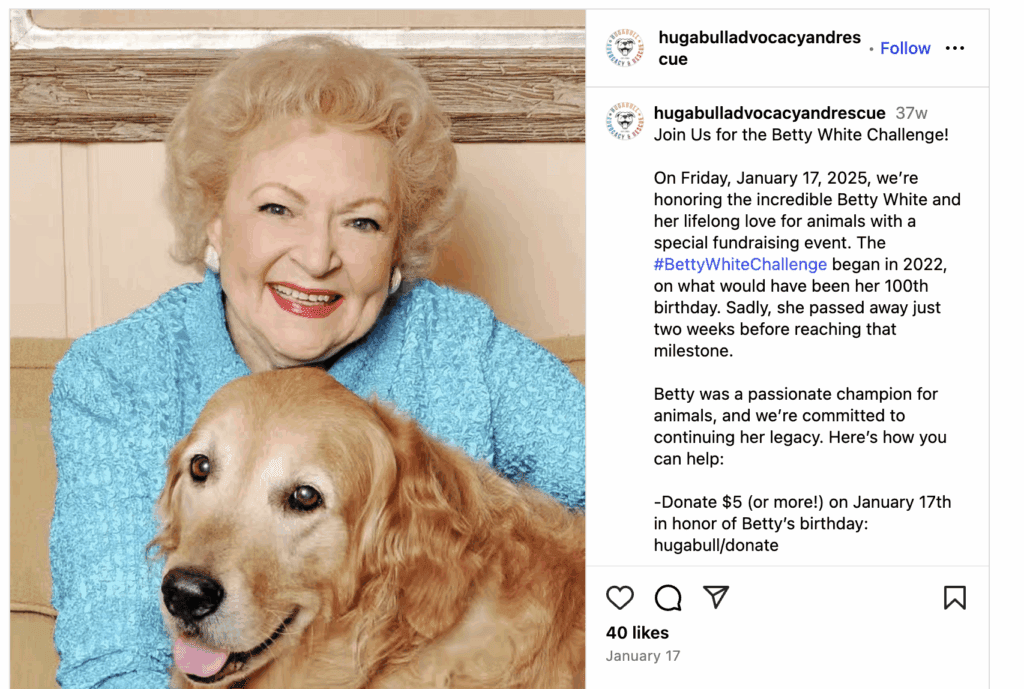
Platform: Facebook, Instagram, Twitter
This organic fan movement in 2022 raised over $12.7 million for animal shelters and rescues. In memory of Betty White, a lifelong animal advocate and beloved actress, individuals are encouraged to donate just $5 or their time to a rescue, carrying on her legacy.
Why it Works:
This social media campaign was easy for anyone to participate in by sharing posts with #BettyWhiteChallenge. This fundraiser showcased how empathy-based marketing has incredible potential to go viral – people love animals, and people loved Betty White. Plus, this gave opportunities for donation matching, amplifying the impact for animal shelters all over.
St. Jude PLAY LIVE (Annual)
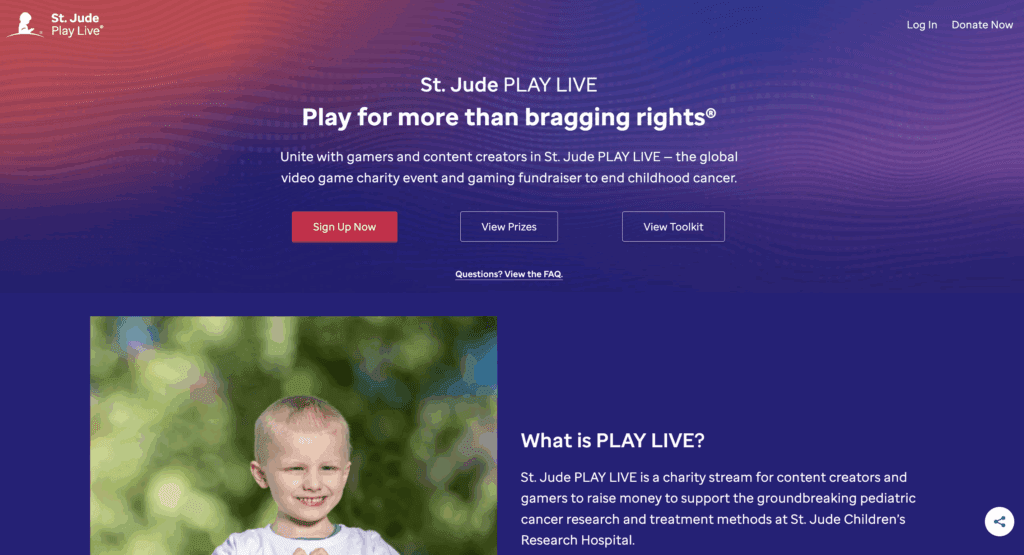
Platform: Twitch, YouTube Gaming, TikTok Live
Gaming is a tried-and-true pastime for many individuals; combining charity with nonprofit fundraising was a no-brainer. Since its launch, they’ve raised over $45 million for St. Jude’s Children’s Hospital.
Why it works:
Influencer marketing has become increasingly popular. By connecting fundraising with gamers and live streaming, nonprofits are reaching an audience they may never have with traditional fundraisers. Bonus, many of these streaming platforms have easy-to-use fundraising tools and overlays like donation stickers, buttons, leaderboards and milestones to encourage donor engagement.
#TeamSeas
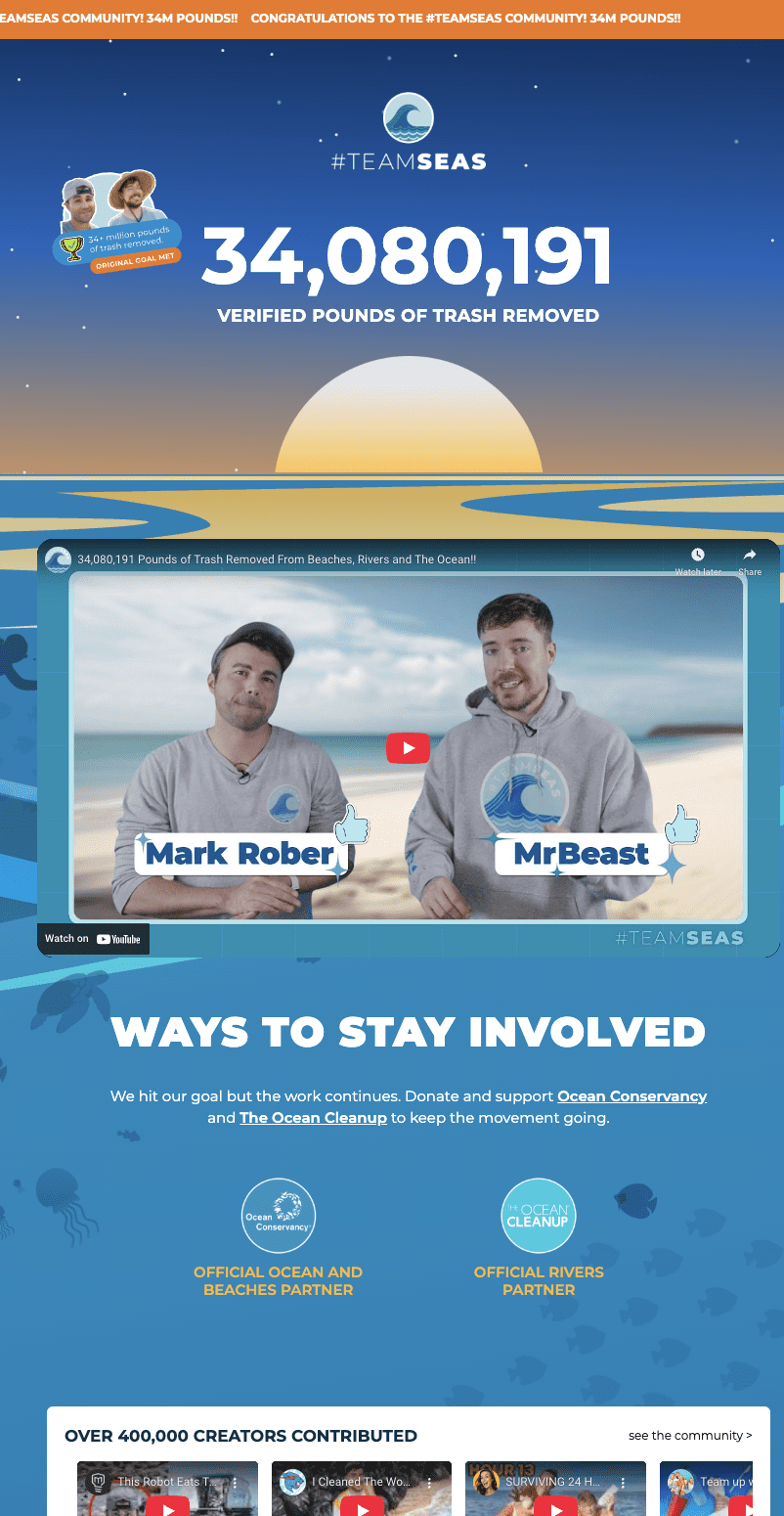
Platform: YouTube, Twitter/X, TikTok, Instagram
Already viral YouTubers MrBeast and Mark Rober came together with the goal of removing 30 million pounds of trash from the ocean. Partnered with The Ocean Cleanup and Ocean Conservancy, they raised over $34 million, with more than 400,000 creators contributing.
Why it works:
This online fundraising campaign gave supporters a clear and measurable goal, equating $1 donation to 1 pound of trash removed. They utilized their massive online community and video storytelling to gain viral traction across multiple social platforms. Plus, their donation page is incredibly engaging with tons of video content and leaderboards that highlight “most trash” and “top teams”
Best Practices for Social Media Fundraising
Ultimately, when it comes to fundraising on social media, you might not go “viral,” but these tips we’re about to share will put you in the best position possible.
Use Storytelling to Turn Followers into Donors
Storytelling is one of the main pillars when it comes to fundraising. People need to have an emotional connection to your cause in order to donate their hard-earned money. The stronger that connection is, the easier it is to encourage supporters to back your mission.
Emotions drive decision-making. The more compelling a story you tell about your nonprofit’s goals, the more likely someone will want to act. Are you sharing the joy your organization brings? Are you rallying supporters to solve an injustice in your community? Is there a heartbreaking situation that you can fix with the help of donors? Figure out how to relate to your followers in a way that motivates their personal giving.
Keep in mind that your story needs to be authentic to your mission; you’ll risk losing credibility and supporters by overexaggerating or putting on a facade.
Read more: Mission to Messaging: The 2025 Nonprofit Branding Playbook
Effective nonprofit storytelling also inspires others. In the great examples we shared above, the factor that made them so successful was the sense of shared purpose. When posting on social media about your fundraising goals, it’s important to highlight the impact each and every person has made. Even if someone can’t contribute monetarily, their efforts are still felt through actions like sharing on Instagram stories or texting the donation link to friends.
Encourage Your Supporters to Spread the Word
One of social media’s biggest uses in fundraising is that you can engage donors to work on your behalf.
These options amplify your campaign’s fundraising ability while also exposing you to potential supporters you may not have reached otherwise. Here are a few examples:
- Viral Challenge Videos: Create a viral video challenge (such as the ALS “Ice Bucket Challenge”) and encourage supporters to participate and post evidence on social media. Like a phone tree, participants take the message to their greater networks — spreading your cause and encouraging more donations.
- Brand Ambassadors: Appoint your most passionate supporters (maybe those with significant social network followings) as brand ambassadors. This can also be considered influencer marketing. Incentivize them to spread the word about your organization on their own profiles with nonprofit merch and experiences. For example, Big Brothers Big Sisters of America’s YouTube channel and their Start Something web series.
- Peer-to-Peer Fundraising: Many of the examples we’ve shared today are peer-to-peer fundraising, but encouraging your supporters to set up a dedicated page on your website is a step you won’t want to miss. On this page, they share their story and why they are a champion of your organization. This allows them to easily highlight their experience in their own words, then post it on their socials and collect donations on your behalf. For example, check out the American Cancer Society’s Relay for Life peer-to-peer advocacy page.
- Crowdfunding: Create a crowdfunding campaign and encourage supporters to share it on their personal social networks. Their friends and families donate directly to your campaign, so it’s a bit different than peer-to-peer fundraising. Think of crowdfunding as a single donation page with one story, and peer-to-peer as individual stories that are tied to the same cause. Check out these 3 great examples of crowdfunding success from GoFundMe.
Group fundraising ideas like these are incredibly impactful. Bringing together passionate individuals on your behalf makes it easy to raise more for your org and social media makes it even easier. It was practically made to rise to the challenge!
Blend Live Events with Digital Fundraising Moments
Some people criticize social media for causing the decline of in-person interactions, with instant messaging replacing spoken conversations and video sharing replacing live experiences.
However, it doesn’t have to be that way — instead, use social media to amplify in-person experiences.
Here’s how socials can boost attendance at your live events:
- Facebook Events Listing: Create an event-specific page that holds all of the important information surrounding your fundraising event. People can RSVP accordingly and easily share the page with their friends and family.
- Pledge Campaigns: If your event includes a challenge for attendees, such as a walk-a-thon or a 5K run, consider creating a pledge campaign. Attendees create personal pledge campaign pages in conjunction with your overall fundraising page and get pledged donations (gifts promised for a later date) to be collected once they complete the event.
- Live Video Sharing. Some may view this as a replacement for the live event — if you can stream it, why attend in person? However, for multi-day events, this can be the excitement that convinces people to join. Bonus: if you stream an event across the county, you might inspire donors from all over. Double bonus: if you record the event, you can upload it to your website and share clips on social platforms to gain more supporters for future fundraising efforts.
Read More: The Ultimate List of 40 Virtual Fundraiser Ideas for Your Nonprofit
Tip: Add a donate button to your organization’s Facebook or Instagram page, allowing supporters to give in the moment as they scroll through their newsfeed.
Track, Measure and Pivot as Needed
Social media provides a wealth of insights on what your donors like and dislike, based on how they interact with your nonprofit. If you’re not tracking these insights, you might be missing out.
Track these key performance indicators to get a better view of your online fundraising success:
- Web traffic statistics
- Number of donors reaching your website from social media links
- Organic search traffic
- Direct traffic
- Follower demographics
- Age
- Location
- Gender
This clear view of the audience your campaign reaches will allow you to perfect your social media strategies.
Use a nonprofit CRM to investigate your data and gain deeper insights. An effective CRM integrates all your systems (digital giving platform, website and social networks) into one database. If you notice a decline in traffic or donations, it’s time for a change in your marketing initiatives.
Try WildApricot free for 60 days!
It’s important for your fundraising software to make everything easier. From managing donations and analyzing donor data to simplifying the giving experience and automating messaging. WildApricot (that’s us!) is an all-in-one management software that can streamline your fundraising efforts. Here are a couple of highlights:
- Build donation pages with features like a fundraising thermometer
- Process payments and enable auto-pay for recurring donations
- Automate emails highlighting your fundraising campaign and initiatives
- Create and manage events with donation options upon registration
Start a 60-day free trial today and optimize your next fundraising campaign.
Keep the Connection Going After Your Campaign Ends
Even after using these strategies for your social media fundraising, your job isn’t done. It’s crucial to follow up with donors and participants in your campaign.
This could be thank-you posts showing impact, overall donations raised, the work you’re doing with the help of those gifts or even personal thank-you messages to supporters.
While social networks amplify the reach of your fundraiser and expose your organization to a wider audience, this doesn’t mean you can get lazy with gratitude. A casual social media donor now could become a lifelong supporter down the line, and the difference will be your gratitude and stewardship post-share.
Read more: Go Beyond the Thank You Note: Donor Recognition 101
Overall, remember these key factors when it comes to social media fundraising:
- Simplicity: Your fundraiser should be easy to participate in
- Emotion: Connect with supporters on a deeper level for the most impact
- Storytelling: Show people why they should care about your cause
- Appreciation: Say thank you and highlight the difference the supporters made
- Shareability: Visuals, hashtags and challenges spread fast
Trust us, you’ll see the difference it makes.

